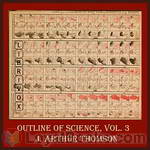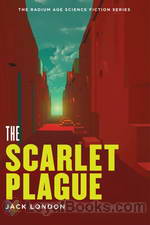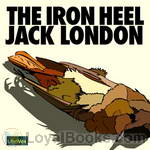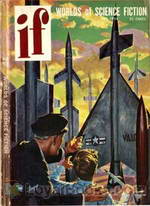|
Books Should Be Free Loyal Books Free Public Domain Audiobooks & eBook Downloads |
|
|
Books Should Be Free Loyal Books Free Public Domain Audiobooks & eBook Downloads |
|
Science |
|---|
|
Book type:
Sort by:
View by:
|
By: Henry Ward Beecher (1813-1887) | |
|---|---|
 Twelve Causes of Dishonesty
Twelve Causes of Dishonesty
| |
By: Henry Weightman Stelwagon (1853-1919) | |
|---|---|
 Essentials of Diseases of the Skin Including the Syphilodermata Arranged in the Form of Questions and Answers Prepared Especially for Students of Medicine
Essentials of Diseases of the Skin Including the Syphilodermata Arranged in the Form of Questions and Answers Prepared Especially for Students of Medicine
| |
By: Herbert B. Livingston | |
|---|---|
 Daughters of Doom
Daughters of Doom
| |
By: Herbert D. Kastle | |
|---|---|
 The First One
The First One
| |
By: Herbert Feis (1893-1972) | |
|---|---|
 The Settlement of Wage Disputes
The Settlement of Wage Disputes
| |
By: Herbert J. Hall (1870-1923) | |
|---|---|
 The Untroubled Mind
The Untroubled Mind
A very wise physician has said that “every illness has two parts—what it is, and what the patient thinks about it.” What the patient thinks about it is often more important and more troublesome than the real disease. What the patient thinks of life, what life means to him is also of great importance and may be the bar that shuts out all real health and happiness. The following pages are devoted to certain ideals of life which I would like to give to my patients, the long-time patients who have especially fallen to my lot. | |
By: Herbert Joseph Moorhouse (1882-) | |
|---|---|
 Deep Furrows
Deep Furrows
| |
By: Herbert Mayo (1796-1852) | |
|---|---|
 Popular Superstitions, and the Truths Contained Therein
Popular Superstitions, and the Truths Contained Therein
"In the following Letters I have endeavoured to exhibit in their true light the singular natural phenomena of which old superstition and modern charlatanism in turn availed themselves—to indicate their laws, and to develop their theory." In 14 letters, British physiologist Herbert Mayo is giving the reader an overview of popular superstitions of previous times, like vampirism, somnambulism or even ghost sightings, and exposing how in previous times they were treated with fear, ignorance and intolerance, often leading to crime, while he endeavours to give rational explanations for the phenomena with the goal to find treatments and cures for the afflicted. - Summary by Sonia | |
By: Herbert Spencer (1820-1903) | |
|---|---|
 Essays: Scientific, Political, & Speculative, Vol. I
Essays: Scientific, Political, & Speculative, Vol. I
| |
By: Herbert Wildon Carr (1857-1931) | |
|---|---|
 General Principle of Relativity: In Its Philosophical and Historical Aspect
General Principle of Relativity: In Its Philosophical and Historical Aspect
The main purpose of this book is to show the historical relations of the new principle to the old philosophical problems and to the classical theories of space and time. - Summary by Adapted from the Preface | |
 Theory of Monads: Outlines of the Philosophy of the Principle of Relativity
Theory of Monads: Outlines of the Philosophy of the Principle of Relativity
Since the publication of this book, a little more than a year ago, the interest in Einstein and the principle of relativity has very greatly increased. There are now a large number of popular expositions, and the theory itself has undergone some notable advances in its philosophical, mathematical and physical application. In pure philosophy Lord Haldane's Reign of Relativity has applied it to the direct interpretation of the theory of knowledge. In mathematical physics the important work of Hermann... | |
By: Hermann von Helmholtz (1821-1894) | |
|---|---|
 Popular Lectures on Scientific Subjects
Popular Lectures on Scientific Subjects
This presents a summary of many of Hemholtz's areas of research. He investigated the workings of the brain in its appreciation of art and music, and also developed some of the first rigorous ideas of how our solar system formed itself. Then, he was a contributor to the new theories of Einstein's curved space-time universe, and lastly, worked with the nascent Quantum Theory. He lived one of the most productive eras of history. The intent of the series of project of which this book is the second part, is to get a double-barreled insight into the great 19th century scientists on whose shoulders Einstein stood in developing his Theory of Relativity... | |
By: Hester Lynch Piozzi (1741-1821) | |
|---|---|
 Glimpses of Italian society in the eighteenth century
Glimpses of Italian society in the eighteenth century
Selections from the "Observations and reflections made in the course of a journey through France, Italy, and Germany" by Hester Lynch Piozzi who, during her first marriage to Henry Thrale, was the hostess and friend of many of her famous contemporaries including Dr Johnson and Fanny Burney. The vivid and personal "Observations and Reflections" was first published in 1789. - Summary by barbara2 | |
By: Horace Brown Fyfe (1918-1997) | |
|---|---|
 Irresistible Weapon
Irresistible Weapon
| |
 A Transmutation of Muddles
A Transmutation of Muddles
| |
 The Outbreak of Peace
The Outbreak of Peace
| |
 This World Must Die!
This World Must Die!
| |
 Flamedown
Flamedown
| |
 Satellite System
Satellite System
| |
 The Talkative Tree
The Talkative Tree
| |
 Exile
Exile
| |
By: Horace Curzon Plunkett (1854-1932) | |
|---|---|
 The Rural Life Problem of the United States Notes of an Irish Observer
The Rural Life Problem of the United States Notes of an Irish Observer
| |
By: Hosea Quinby (1804-1878) | |
|---|---|
 The Prison Chaplaincy, And Its Experiences
The Prison Chaplaincy, And Its Experiences
| |
By: House Un-American Activities Committee | |
|---|---|
 Preliminary Report on Neo-Fascist and Hate Groups
Preliminary Report on Neo-Fascist and Hate Groups
A preliminary report to the U. S. Congress on a portion of the subversive activities conducted by two specific Neo-Fascist organizations that espouse racial hatred and un-Democratic positions then at work in the United States. - Summary by KevinS | |
By: Howard I. Chapelle (1901-1975) | |
|---|---|
 The Pioneer Steamship Savannah: A Study for a Scale Model United States National Museum Bulletin 228, 1961, pages 61-80
The Pioneer Steamship Savannah: A Study for a Scale Model United States National Museum Bulletin 228, 1961, pages 61-80
| |
 The Migrations of an American Boat Type
The Migrations of an American Boat Type
| |
By: Hugo Münsterberg (1863-1916) | |
|---|---|
 Psychotherapy
Psychotherapy
Talking about viewing the Ocean "If I take the attitude of appreciation, it would be absurd to say that this wave is composed of chemical elements which I do not see; and if I take the attitude of physical explanation, it would be equally absurd to deny that such elements are all of which the wave is made. From the one standpoint, the ocean is really excited; from the other standpoint, the molecules are moving according to the laws of hydrodynamics. If I want to understand the meaning of this scene every reminiscence of physics will lead me astray; if I want to calculate the movement of my boat, physics alone can help me".(from the Introduction) | |
By: Hugo P. (Hugo Paul) Thieme (1870-1940) | |
|---|---|
 Women of Modern France
Women of Modern France
| |
By: Humphry Davy (1778-1829) | |
|---|---|
 Consolations in Travel or, the Last Days of a Philosopher
Consolations in Travel or, the Last Days of a Philosopher
| |
By: Ida B. Wells-Barnett (1862-1931) | |
|---|---|
 Southern Horrors: Lynch Law In All Its Phases
Southern Horrors: Lynch Law In All Its Phases
Thoroughly appalled and sickened by the rising numbers of white-on-black murders in the South since the beginning of Reconstruction, and by the unwillingness of local, state and federal governments to prosecute those who were responsible, Ida Bell Wells-Barnett wrote Southern Horrors, a pamphlet in which she exposed the horrible reality of lynchings to the rest of the nation and to the world. Wells explained, through case study, how the federal government's failure to intervene allowed Southern states... | |
By: Irving E. Cox | |
|---|---|
 The Guardians
The Guardians
| |
 Impact
Impact
| |
By: Irving Fisher (1867-1947) | |
|---|---|
 How to Live Rules for Healthful Living Based on Modern Science
How to Live Rules for Healthful Living Based on Modern Science
| |
By: Irving W. Lande | |
|---|---|
 Slingshot
Slingshot
| |
By: Isaac Asimov (1920-1992) | |
|---|---|
 Worlds Within Worlds: The Story of Nuclear Energy, Volumes 1-3
Worlds Within Worlds: The Story of Nuclear Energy, Volumes 1-3
This is a short booklet on science fact commissioned by the U. S. Energy Research and Development Administration . It tells the story of the origins of nuclear physics in terms understandable to an audience with minimal technical background. What were the steps through history - the discoveries that built upon one another - from alchemy to chemistry, physics, astronomy, mathematics, and quantum mechanics, that led to our understanding and harnessing nuclear energy? Asimov was a great writer of both science fact and fiction who wrote or edited more than 500 books, published in 9 of the 10 major categories of the Dewey Decimal Classification. | |
 Genetic Effects of Radiation
Genetic Effects of Radiation
This is a book in the "Understanding the Atom Series" from the Division of Technical Information, U. S. Atomic Energy Commission. The authors discuss topics of The Machinery of Inheritance, Mutations, Radiation, Dose and Consequences. - Summary by Larry Wilson | |
By: Isaac George Briggs (1892-) | |
|---|---|
 Epilepsy, Hysteria, and Neurasthenia Their Causes, Symptoms, & Treatment
Epilepsy, Hysteria, and Neurasthenia Their Causes, Symptoms, & Treatment
| |
By: Isaac Newton (1642-1727) | |
|---|---|
 Opticks
Opticks
The famous physicist Sir Isaac Newton lectured on optics from 1670 - 1672. He worked on the refraction of light into colored beams using prisms and discovered chromatic aberration. He also postulated the corpuscular form of light and an ether to transmit forces between the corpuscles. His "Opticks", first published 1704 contains his postulates about the topic. This is the fourth edition in English, from 1730, which Newton corrected from the third edition before his death. | |
By: Isabel Eaton | |
|---|---|
 Special Report on Negro Domestic Service in the Seventh Ward Philadelphia
Special Report on Negro Domestic Service in the Seventh Ward Philadelphia
This paper is an attempt to give the most accurate facts obtainable bearing upon the question of colored domestic service in Philadelphia. | |
By: Ivan Ray Tannehill (1890-1959) | |
|---|---|
 Hurricane Hunters
Hurricane Hunters
This 1955 book by an acknowledged authority is an absorbing account of meteorology before the advent of weather satellites. “This is the lively account of the hair-raising experiences of the men who have probed by sea and air into the inner mysteries of the world’s most terrible storms…. Here is the first intimate revelation of what the human eye and the most modern radars see in the violent regions of the tropical vortex. The descriptions of the activities of these valiant scouts of the storms are taken from personal interviews with military flyers and weathermen who have risked their lives in the furious blasts in all parts of the hurricane... | |
By: J. A. Taylor | |
|---|---|
 Far from Home
Far from Home
| |
By: J. Anthony Ferlaine | |
|---|---|
 One Out of Ten
One Out of Ten
| |
By: J. Arthur Thomson (1861-1933) | |
|---|---|
 The Outline of Science
The Outline of Science
The Outline of Science, Volume 1 was written specifically with the man-on-the-street in mind as the target audience. Covering scientific subjects ranging from astronomy to biology to elementary physics in clear, concise and easily understood prose, this popular science work is largely as relevant today as when first published in 1922. Special emphasis is given to the principles of biological adaptation and evolution, especially how they relate to the rise of the human species from lower orders. Also included are the basics of the (then) fairly new concept of relativity and its impact on emerging scientific theories... | |
 The Outline of Science Vol. 3
The Outline of Science Vol. 3
The Outline of Science was written specifically with the man-on-the-street in mind as the target audience. Covering scientific subjects ranging from astronomy to biology to elementary physics in clear, concise and easily understood prose, this popular science work is largely as relevant today as when first published in 1922.In this third volume (of four), we learn about psychic science, the characteristics and interrelations of living creatures, as well as Botany, Biology, and Chemistry. Some chapters are devoted to the new applied sciences of electricity, telegraphy, and flying. | |
 Outline of Science, Vol 4
Outline of Science, Vol 4
The Outline of Science was written specifically with the man-on-the-street in mind as the target audience. Covering scientific subjects ranging from astronomy to biology to elementary physics in clear, concise and easily understood prose, this popular science work is largely as relevant today as when first published in 1922. In this fourth volume , we learn about bacteria, luminous organisms and lower vertebrates as well as domesticated animals. Other chapters are devoted to ethnology, health, relativity theory and philosophy of science. | |
By: J. B. Woodley | |
|---|---|
 With a Vengeance
With a Vengeance
| |
By: J. F. (John Fletcher) Hurst (1834-1903) | |
|---|---|
 The Wedding Day The Service—The Marriage Certificate—Words of Counsel
The Wedding Day The Service—The Marriage Certificate—Words of Counsel
| |
By: J. F. (Joseph Florimond) Loubat (1831-1927) | |
|---|---|
 The Medallic History of the United States of America 1776-1876
The Medallic History of the United States of America 1776-1876
| |
By: J. Francis McComas (1911-1978) | |
|---|---|
 Criminal Negligence
Criminal Negligence
| |
By: J. H. (Jonathan Harrington) Green (1812-) | |
|---|---|
 Secret Band of Brothers A Full and True Exposition of All the Various Crimes
Secret Band of Brothers A Full and True Exposition of All the Various Crimes
| |
By: J. Henri Fabre (1823-1915) | |
|---|---|
 Life of the Spider
Life of the Spider
Jean-Henri Casimir Fabre was a French entomologist and author. He was born in St. Léons in Aveyron, France. Fabre was largely an autodidact, owing to the poverty of his family. Nevertheless, he acquired a primary teaching certificate at the young age of 19 and began teaching at the college of Ajaccio, Corsica, called Carpentras. In 1852, he taught at the lycée in Avignon. | |
By: J. Horace (John Horace) McFarland (1859-1948) | |
|---|---|
 Getting Acquainted with the Trees
Getting Acquainted with the Trees
| |
By: J. J. [Editor] Cranmer | |
|---|---|
 Vanity, All Is Vanity A Lecture on Tobacco and its effects
Vanity, All Is Vanity A Lecture on Tobacco and its effects
| |
By: J. Morris Slemons (1876-1948) | |
|---|---|
 The Prospective Mother
The Prospective Mother
A Handbook for Women During Pregnancy. This book, written for women who have no special knowledge of medicine, aims to answer the questions which occur to them in the course of pregnancy. Directions for safeguarding their health have been given in detail, and emphasis has been placed upon such measures as may serve to prevent serious complications. (Introduction by J. Morris Slemons) | |
By: J. P. (James Perry) Cole (1889-) | |
|---|---|
 Military Instructors Manual
Military Instructors Manual
| |
By: J. R. (John Robert) Hutchinson | |
|---|---|
 The Press-Gang Afloat and Ashore
The Press-Gang Afloat and Ashore
| |
By: J. W. H. (John William Henry) Eyre (1869-) | |
|---|---|
 The Elements of Bacteriological Technique A Laboratory Guide for Medical, Dental, and Technical Students. Second Edition Rewritten and Enlarged.
The Elements of Bacteriological Technique A Laboratory Guide for Medical, Dental, and Technical Students. Second Edition Rewritten and Enlarged.
| |
By: J.G. M'Pherson (1845-?) | |
|---|---|
 Meteorology; or Weather Explained
Meteorology; or Weather Explained
Weather Explained: Fog, clouds, rain, haze, thunder, cyclones, dew point and how to count dust motes are just a few of the 35 topics covered in short, easy to read and understand chapters in this book published in 1905. | |
By: Jack Douglas | |
|---|---|
 Dead World
Dead World
| |
 Test Rocket!
Test Rocket!
| |
By: Jack Egan | |
|---|---|
 Cully
Cully
| |
By: Jack G. Huekels | |
|---|---|
 Advanced Chemistry
Advanced Chemistry
| |
By: Jack London | |
|---|---|
 The Scarlet Plague
The Scarlet Plague
Known mainly for his tales of adventure, this work of science fiction by Jack London is set in a post-apocalyptic future. It’s 2072, sixty years after the scarlet plague has depopulated the planet. James Howard Smith is one of the few survivors of the pre-plague era left alive in the San Francisco area, and as he realizes his time grows short, he tries to impart the value of knowledge and wisdom to his grandsons. Through his narrative, we learn how the plague spread throughout the world and of the struggles of the handful of survivors it left in its wake. The Scarlet Plague was originally published in London Magazine in 1912. | |
 The Iron Heel
The Iron Heel
A dystopian novel about the terrible oppressions of an American oligarchy at the beginning of the Twentieth Century, and the struggles of a socialist revolutionary movement. (Introduction by Matt Soar) | |
By: Jack Sharkey (1931-) | |
|---|---|
 The Dope on Mars
The Dope on Mars
| |
 Minor Detail
Minor Detail
| |
By: Jack Vance (1916-) | |
|---|---|
 Sjambak
Sjambak
| |
By: Jack Williamson (1908-2006) | |
|---|---|
 Salvage in Space
Salvage in Space
This is an SF tale of excitement, danger, derring-do and strangely enough, love. A lonely and very poor asteroid miner, slowly collecting bits of metallic ore in the asteroid belt on his slowly accumulating 'planet' of debris, sees and captures a derelict space ship with a horrible monster aboard .. as well as a dead but lovely girl. How does it all end? Well you will need to listen to find out. One of Jack Williamson's early tales that earned him his reputation as a master story teller. | |
 The Pygmy Planet
The Pygmy Planet
| |
By: Jackson Gregory (1882-1943) | |
|---|---|
 Daughter of the Sun A Tale of Adventure
Daughter of the Sun A Tale of Adventure
| |
By: Jacob A. Riis (1849-1914) | |
|---|---|
 The Battle with the Slum
The Battle with the Slum
| |
By: Jacob Abbott (1803-1879) | |
|---|---|
 Rollo's Philosophy. [Air]
Rollo's Philosophy. [Air]
| |
 Rollo's Museum
Rollo's Museum
| |
 Rollo's Experiments
Rollo's Experiments
| |
By: Jacob Joshua Levison (1881-?) | |
|---|---|
 Studies About Trees
Studies About Trees
In this work Levison aims to create a book that allows beginners to be able to understand how to identify trees, as well as to give information of their structure and uses. Once these topics are addressed, he then moves into concepts of care, planting and forestry. | |
By: Jagadis Chandra Bose (1858-1937) | |
|---|---|
 Response in the Living and Non-Living
Response in the Living and Non-Living
| |
 Sir Jagadis Chunder Bose His Life and Speeches
Sir Jagadis Chunder Bose His Life and Speeches
| |
By: James A. Cox | |
|---|---|
 A Choice of Miracles
A Choice of Miracles
| |
By: James Bayard Clark (1869-) | |
|---|---|
 Some Personal Recollections of Dr. Janeway
Some Personal Recollections of Dr. Janeway
| |
By: James Blish (1921-1975) | |
|---|---|
 The Thing in the Attic
The Thing in the Attic
Honath the Pursemaker is a heretic. He doesn’t believe the stories in the Book of Laws which claims giants created his tree-dwelling race. He makes his opinion known and is banished with his infidel friends to the floor of the jungle where dangers abound. Perhaps he’ll find some truth down there. – The Thing in the Attic is one of Blish’s Pantropy tales and was first published in the July, 1954 edition of If, Worlds of Science Fiction magazine. | |
 One-Shot
One-Shot
| |
By: James Bryant Conant (1893-1978) | |
|---|---|
 Organic Syntheses
Organic Syntheses
| |
By: James C. Philip (1873-1941) | |
|---|---|
 The Romance of Modern Chemistry
The Romance of Modern Chemistry
A fascinating look back at the state of the art of chemistry 100 years ago, this book by James C. Philip, PhD, an assistant professor of chemistry at The Imperial College of Science and Technology, Kensington, provides a "description in non-technical language of the diverse and wonderful way which chemical forces are at work, and their manifold application in modern life" in 1910. Professor Philip relates many of the key chemical discoveries of early academic researchers in the context of the practical uses to which these discoveries were applied in the early 20th century. | |
By: James Causey | |
|---|---|
 Teething Ring
Teething Ring
| |
 Competition
Competition
| |
By: James Clerk Maxwell (1831-1879) | |
|---|---|
 Five of Maxwell's Papers
Five of Maxwell's Papers
| |
By: James Cowles Prichard (1786-1848) | |
|---|---|
 Researches into the Physical History of Man
Researches into the Physical History of Man
Prichard’s Researches into the Physical History of Man has been called the most important pre-Darwinian anthropological work in English of the nineteenth century. He is considered by many to be the "Father of Anthropology". The central conclusion of the work is the unity of the human species, which has been acted upon by causes that have since divided it into permanent varieties or races. In his Preface, he writes: "In the course of this essay I have maintained the opinion that all mankind constitute but one race or proceed from a single family"... | |
By: James De Mille (1833-1880) | |
|---|---|
 A Strange Manuscript Found in a Copper Cylinder
A Strange Manuscript Found in a Copper Cylinder
A Strange Manuscript Found in a Copper Cylinder is the most popular of James De Mille’s works. It was serialized posthumously in Harper’s Weekly, and published in book form by Harper and Brothers of New York City in 1888. This satirical romance is the story of Adam More, a British sailor. Shipwrecked in Antarctica, he stumbles upon a tropical lost world of prehistoric animals, plants, and a cult of death-worshipping primitives. He also finds a highly developed human society which has reversed the values of Victorian society... | |
By: James Elliott (1880-1959) | |
|---|---|
 Outlines of Greek and Roman Medicine
Outlines of Greek and Roman Medicine
| |
By: James Emerson Tennent (1804-1869) | |
|---|---|
 Sketches of the Natural History of Ceylon
Sketches of the Natural History of Ceylon
| |
By: James H. Rawlinson | |
|---|---|
 Through St. Dunstan's to Light
Through St. Dunstan's to Light
| |
By: James H. Schmitz (1911-1981) | |
|---|---|
 The Winds of Time
The Winds of Time
| |
 An Incident on Route 12
An Incident on Route 12
| |
 Gone Fishing
Gone Fishing
| |